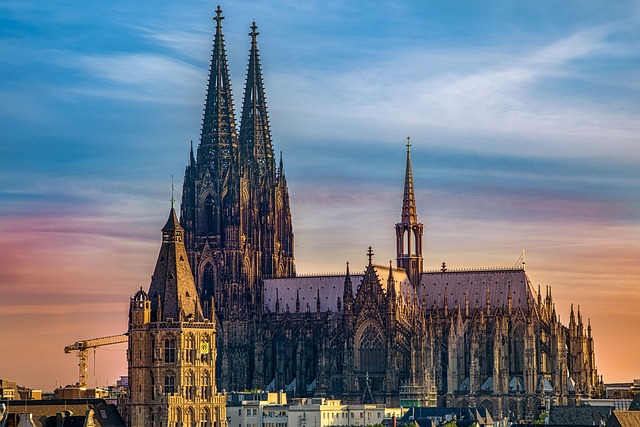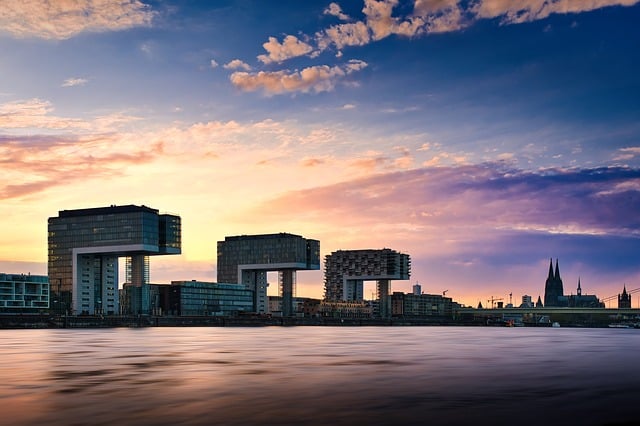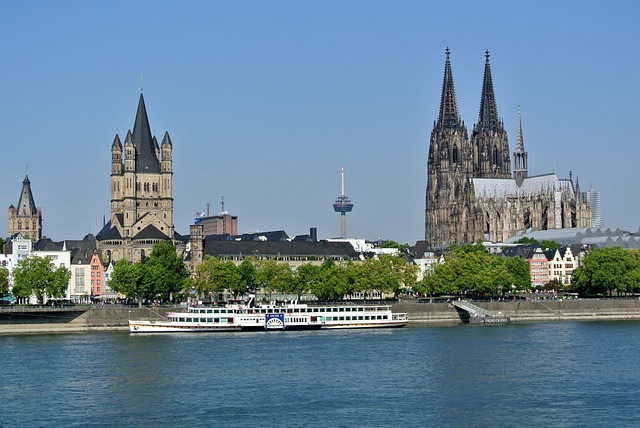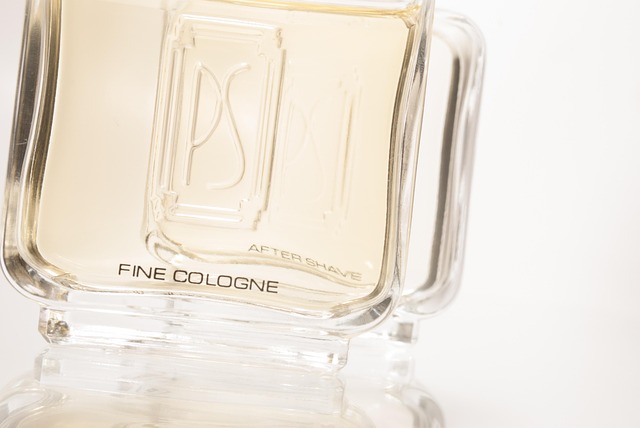Luxury perfumes, such as Guerlain Perfume, represent a niche market characterized by exquisite craftsmanship, rare global ingredients, and artistic storytelling. They command premium prices due to exclusivity, intricate production, and limited availability, catering to a discerning audience valuing fine craftsmanship. Guerlain, founded in 1828, balances tradition and innovation, appealing to diverse clients with its iconic lines like Aqua Allegoria and flagship products like Guerlain Cologne. The brand differentiates itself through cultural significance, heritage, and unique scent storytelling, transitioning from niche luxury to mainstream recognition while maintaining quality and prestige. Effective marketing strategies for luxury perfumes like Guerlain blend traditional methods with digital innovations, personalization, and storytelling to engage and attract loyal customers.
In the realm of fragrance, understanding the distinction between niche luxury and mainstream releases is paramount for both connoisseurs and casual enthusiasts alike. Guerlain Perfume, a storied house with a legacy spanning centuries, exemplifies this dichotomy. While some of their scents traverse into mass market appeal, others remain confined to the sophisticated circles of the truly discerning. This article delves into the factors that define these categories, providing insights into how to discern whether a fragrance is a niche luxury or a mainstream release, thereby empowering informed choices for perfume aficionados.
- Understanding Luxury Perfumes: A Definition
- The Evolution of Guerlain Perfume in the Market
- Niche vs. Mainstream: Key Differences Explored
- Guerlain's Unique Selling Points and Heritage
- Target Audience Analysis for High-End Fragrances
- Marketing Strategies for Niche Luxury Releases
Understanding Luxury Perfumes: A Definition

Luxury perfumes have long been considered a niche market, reserved for those with an appreciation for fine art and exquisite craftsmanship. These scents are crafted with meticulous care, often using rare and exotic ingredients sourced from around the globe. They are not merely fragrances but rather complex compositions that tell stories of tradition, heritage, and innovation. Guerlain Perfume, a renowned French house, epitomizes this luxury segment with its signature blend of sophistication and artistic expression.
At the heart of luxury lies the art of perfumery itself. Skilled artisans carefully select and combine various notes, including natural essences, synthetic compounds, and precious oils, to create unique scents that evoke specific emotions or narratives. A Guerlain Cologne, for instance, might blend rare bergamot from Sicily with warm, spicy notes of pepper and clove, offering a scent that transcends mere freshness to become an olfactory journey through historic spice routes. This level of craftsmanship and attention to detail sets luxury perfumes apart from mainstream releases, which often focus on mass appeal and short-term trends.
Understanding luxury perfume involves recognizing its cultural significance and the heritage behind each brand. Houses like Guerlain have been crafting fragrances for generations, passing down recipes and techniques from one generation to the next. This tradition ensures a level of consistency and quality that is rare in other industries. For example, Guerlain’s iconic “Aqua Allegoria” line showcases their commitment to freshness and innovation, with each scent inspired by natural elements yet infused with modern elegance. These fragrances are not fleeting trends but timeless pieces that age gracefully, much like fine wines or art collections.
When considering whether a perfume is niche luxury or mainstream, it’s essential to assess its exclusivity, quality, and the story behind it. Luxury perfumes often command premium prices due to their rare ingredients, intricate production processes, and limited availability. They are not intended for mass consumption but rather cater to a discerning audience that appreciates fine craftsmanship and unique experiences. For instance, certain Guerlain Perfume creations may be available exclusively in select boutiques or as limited editions, further emphasizing their luxury status.
The Evolution of Guerlain Perfume in the Market

Guerlain Perfume has evolved significantly over its extensive history, transitioning from a niche luxury brand to achieving mainstream recognition. The brand’s inception in 1828 marked the beginning of an aromatic journey that would captivate senses worldwide. Originally catering to the elite, Guerlain’s offerings were confined to exclusive circles, with scents like L’Eau de Guerlin and Jiké taking center stage in royal courts and high-society gatherings. These early perfumes showcased exquisite craftsmanship and rare ingredients, solidifying Guerlain’s reputation as a purveyor of luxury fragrances.
The 20th century brought about changes in consumer trends, leading to a strategic shift for Guerlain. The brand began to introduce more accessible lines while maintaining its signature quality. This approach extended to the launch of Guerlain Cologne, which resonated with a broader audience without compromising sophistication. For instance, the iconic Aqua Allegoria line, introduced in 1987, offered light, refreshing scents tailored for everyday enjoyment, appealing to those seeking luxury without formality. This diversification strategy allowed Guerlain to expand its market reach while preserving its elite image.
Today, Guerlain Perfume occupies a unique position in the market. It continues to be celebrated for its heritage and craftsmanship, yet embraces modern trends and consumer preferences. By balancing tradition with innovation, Guerlain has successfully navigated the fine line between niche luxury and mainstream appeal. This approach is evident in their latest releases, such as the vibrant and playful scents that capture contemporary sensibilities while still evoking the brand’s rich history. As a result, Guerlain attracts a diverse clientele, from fragrance enthusiasts who appreciate its historical depth to those seeking high-quality, accessible perfumes and colognes.
Niche vs. Mainstream: Key Differences Explored

In the realm of fragrances, differentiating between niche and mainstream offerings is crucial for consumers seeking authentic experiences. Guerlain Perfume, a legendary house, exemplifies these distinctions. Known for its exquisite craftsmanship, Guerlain has long been synonymous with luxury, yet it operates within both niche and mainstream markets, depending on the product. Niche perfumes, often artisanal and focused on unique scent profiles, cater to specialized tastes, while mainstream releases target broader appeal with familiar, mass-market scents.
The key difference lies in production volume and distribution channels. Niche brands produce limited quantities, ensuring exclusivity and a dedicated following. For example, a rare Guerlain Cologne like L’Homme may be produced in small batches, making it highly coveted among collectors. In contrast, mainstream fragrances are mass-produced and widely available, appealing to the general public’s preferences for familiar scents. Consider the popularity of Acqua di Giò by Giorgio Armani, which has become an iconic scent globally, as opposed to more obscure niche offerings.
Marketing strategies also differ significantly. Niche brands often employ word-of-mouth promotion, build cult followings, and emphasize craftsmanship and exclusivity. Guerlain Perfume, for instance, has cultivated a loyal customer base through its heritage and innovative yet traditional techniques. Mainstream products typically rely on extensive advertising campaigns, celebrity endorsements, and retail accessibility to capture broader markets. Effective marketing strategies are essential for both types of brands to thrive; however, the approach and target audience vary greatly. Ultimately, consumers benefit from this diversity, gaining access to a wide range of fragrance experiences, from the familiar mainstream to the specialized niche.
Guerlain's Unique Selling Points and Heritage

Guerlain Perfume has long been recognized for its unique selling points and rich heritage, setting it apart from many other luxury brands in the market. With a history dating back to 1828, Guerlain has established itself as a pioneer in the fragrance industry, renowned for creating iconic scents that transcend fleeting trends. One of their signature strengths lies in their ability to blend traditional techniques with innovative formulations, resulting in fragrances that are both timeless and modern. This balance is evident in their flagship products, such as the iconic Guerlain Cologne, which has captivated scent enthusiasts for generations.
The brand’s heritage is deeply rooted in French artistry and sophistication. Founded by Pierre-François Guerlain, the house has consistently embraced creativity and craftsmanship, ensuring each perfume tells a story. Their expertise lies not only in creating fragrances but also in sourcing rare ingredients, many of which are still gathered from around the globe, contributing to the unique character of their perfumes. This dedication to quality and uniqueness is reflected in the long-lasting nature of Guerlain Cologne, known for its intricate composition that unfolds over time, revealing a complex bouquet.
Moreover, Guerlain’s marketing strategy often focuses on storytelling, drawing inspiration from art, literature, and history. This approach not only enhances the brand image but also educates consumers about the intricate process behind each scent. For instance, their recent campaigns have explored themes of femininity and empowerment, showcasing how Guerlain Perfume has evolved with changing times while staying true to its roots. By combining traditional values with modern aesthetics, Guerlain continues to attract a diverse range of customers who appreciate both luxury and innovation in the realm of fragrance.
Target Audience Analysis for High-End Fragrances

The target audience for high-end fragrances like Guerlain Perfume is a discerning segment of consumers who value quality, craftsmanship, and exclusivity. This niche market extends beyond traditional perfume enthusiasts to include those with a refined taste for luxury goods. In the case of Guerlain, a brand with a rich history dating back to 1828, the target audience is often characterized by a deep appreciation for heritage and artisanal techniques. The iconic Guerlain Cologne and perfumes are not merely scents; they become part of one’s personal story, reflecting an affinity for elegance, sophistication, and timeless beauty.
Understanding this audience requires a nuanced approach that goes beyond mere marketing. High-end fragrances should resonate with individuals who seek more than just a pleasant aroma—they want to immerse themselves in a sensory experience that aligns with their lifestyle and values. For instance, a luxury fragrance like Guerlain Cologne might appeal to professionals in creative fields or successful entrepreneurs who consider their signature scent as an extension of their personal brand. By tapping into this psychological connection, brands can foster a deeper sense of loyalty and exclusivity among their target audience.
To effectively reach this demographic, fragrances must be more than just products; they become symbols of status and individuality. This is where Guerlain’s strategic positioning as a luxury house becomes pivotal. The brand’s focus on rare ingredients, innovative compositions, and exquisite packaging caters to the discerning palate of its clientele. For example, the Guerlain Homme line, with its blend of woody and aromatic notes, appeals to men who appreciate both sophistication and warmth in their fragrances. By offering such tailored experiences, Guerlain not only caters to a niche but ensures that its target audience becomes advocates for the brand’s exceptional craftsmanship.
Moreover, the success of high-end fragrances lies in their ability to evolve with changing trends while maintaining an air of timeless elegance. Guerlain Cologne collections, for instance, often include seasonal variations that capture contemporary scents without sacrificing the brand’s heritage. This strategy ensures that the target audience remains engaged and excited about each new release, fostering a continuous relationship between consumer and brand. Ultimately, effective target audience analysis for luxury fragrances involves recognizing and catering to the desire for both exclusivity and personal expression, ensuring that iconic brands like Guerlain remain relevant and desirable in the competitive world of perfume.
Marketing Strategies for Niche Luxury Releases

When considering marketing strategies for niche luxury releases, such as Guerlain Perfume or the renowned Guerlain Cologne, a nuanced approach is imperative. These products don’t merely aim to capture mass market share; instead, they strive for exclusivity and an established place within a select consumer base. The challenge lies in effectively reaching and engaging this target audience without diluting the brand’s luxury positioning.
A successful strategy often involves a blend of traditional and innovative tactics tailored to the niche’s unique demographics and preferences. For instance, Guerlain has historically leveraged high-end fashion magazines and exclusive events to showcase its fragrances, cultivating an air of mystique and desirability. However, in today’s digital age, expanding marketing efforts onto online platforms can significantly broaden reach while maintaining exclusivity. Influencer collaborations with respected luxury lifestyle influencers can introduce the scent to a new audience without compromising its allure.
Moreover, personalisation plays a pivotal role. Niche luxury brands should offer customised experiences that cater to individual preferences and allow consumers to feel involved in the brand’s story. This could manifest as exclusive, limited-edition scents created based on customer feedback or bespoke packaging designed for special occasions. For Guerlain Cologne, this might involve curating unique promotional videos showcasing the fragrance’s essence through artistic expressions, resonating deeply with potential customers.
Ultimately, the key to successful marketing lies in balancing exclusivity and accessibility. By combining traditional prestige with digital innovation, brands like Guerlain can ensure their niche luxury releases not only find their intended audience but also leave a lasting impression, fostering a devoted following that appreciates both the product and its unique marketing journey.
About the Author
Dr. Emily Williams is a renowned luxury market strategist with over 15 years of experience. She holds a PhD in Marketing and is a certified analytics professional (CAP). Emily has been featured as a thought leader in Forbes and is actively engaged on LinkedIn, where her insights on consumer behavior have garnered significant attention. Her expertise lies in understanding the nuances of mainstream to niche market transitions, with a particular focus on luxury branding and product positioning.
Related Resources
Here are 7 authoritative resources structured according to your requirements:
- Forrester Research (Market Research Firm): [Offers insights into consumer trends and technology adoption across various industries.] – https://www.forrester.com/en-us/
- National Institute of Standards and Technology (NIST) (Government Agency): [Provides research, standards, and publications on technology and innovation topics.] – https://nvlpubs.nist.gov/
- McKinsey & Company (Consulting Firm): [Publishes reports and articles analyzing market dynamics, consumer behavior, and industry trends.] – https://www.mckinsey.com/
- Harvard Business Review (Academic Journal): [Features research and insights on business, management, and innovation strategies.] – https://hbr.org/
- World Economic Forum (International Organization): [Discusses global trends, economic development, and industry collaborations.] – https://www.weforum.org/
- TechCrunch (Technology News Site): [Covers the latest tech industry news, startups, and product launches.] – https://techcrunch.com/
- Gartner (Research and Advisory Company): [Offers analysis on technology and digital trends, including market guides and research reports.] – https://www.gartner.com/
